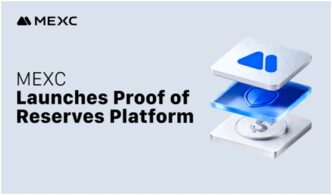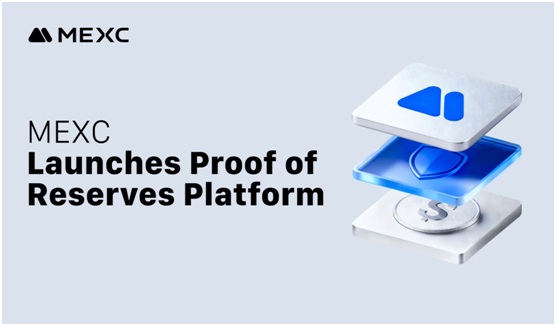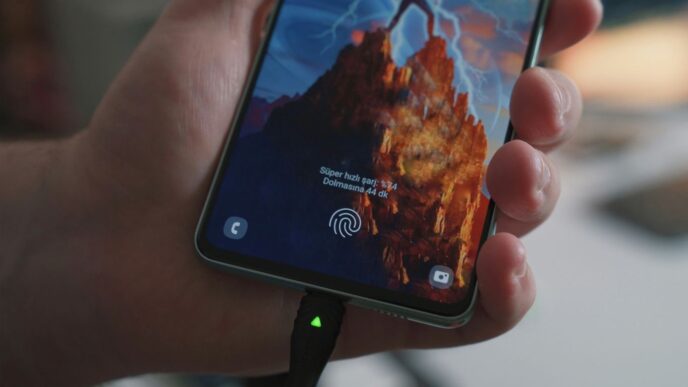Managing money used to be a headache, but things are changing fast. The Tink app is one of those tools that’s making it way easier for regular people to see where their money goes and make smarter choices. Since it started in Sweden back in 2012, Tink has grown a lot, especially after joining forces with Visa. Now, in 2025, it’s not just another finance app—it’s helping millions of people and businesses handle their money with less stress, more clarity, and way more speed. Let’s look at how the Tink app is shaking up personal finance for everyone.
Key Takeaways
- The Tink app started with a simple idea: make banking more open and easy to use for everyone.
- Big partnerships, like the one with Visa and deals with companies like Chip and Adyen, helped Tink grow fast and reach more users.
- Tink’s features, such as real-time risk checks and detailed transaction info, help people feel safer and more in control of their money.
- The app is built on strong privacy and security, making it a trusted choice for users worried about sharing their financial data.
- Tink’s mix of subscription fees, transaction charges, and custom services keeps it sustainable and ready to keep growing in the future.
The Evolution of the Tink App and Its Impact on Open Banking

Early Vision and Founding Principles
Back in 2012, a couple of Swedish founders—Daniel Kjellén and Fredrik Hedberg—decided to change how people handle money. They saw this hill-sized problem: personal finance was messy, full of confusing bank interfaces, and not much choice for regular folks. So, they launched Tink to make finance more open and accessible. The original idea was about letting people see all their money in one place, using data from different banks, which back then was unheard of.
Here’s how their vision took shape:
- They wanted true financial transparency and accessibility, not just another budgeting tool.
- They believed people would make better choices if they could see the whole picture—across all accounts and providers.
- Even in the early days, their mindset was about leveling the playing field for consumers and banks alike.
Pivotal Partnerships Shaping Growth
Tink didn’t just grow on its own. Finding partners became a key step. The first hurdle was convincing banks—these massive, slow-moving institutions—that sharing data was safe and smart. Early funding from investors like Sunstone and Creades helped, but partnerships with neobanks and fintech startups really got the ball rolling. As more banks and fintechs joined in, Tink’s app turned into a platform that others could build on, rather than just a tool for end users.
Three moves that helped Tink break through:
- Formed alliances with both traditional banks and digital-first startups to encourage widespread adoption.
- Gained credibility by securing backing from respected investors and tech figures.
- Advocated for openness, which ended up influencing banking regulations and market expectations.
Milestones From Startup to Visa Acquisition
The timeline is honestly pretty wild. Tink raised serious cash—over $359 million across its lifespan—to keep up momentum. Big acquisitions helped them add new features and scale up quickly.
| Year | Major Milestone |
|---|---|
| 2020 | Acquired Eurobits and Instantor, added aggregation & risk tools |
| 2021 | Bought FinTecSystems, then was acquired by Visa for $2.15B |
| 2022 | Completed the Visa deal, stepped up global ambitions |
| 2024 | Launched ‘Merchant Information’ and real-time ‘Risk Signals’ |
Each event shaped Tink into what it is now: a core piece of the open banking ecosystem. That’s no small feat in a space booming from 183 million to 645 million users over just four years. The Visa acquisition, in particular, pushed Tink’s reach beyond Europe, rooting it in a much bigger network and setting up a future where open finance keeps growing.
So now, Tink isn’t just about personal budgeting anymore—it’s one of the engines behind how open banking is changing finance for everyone.
Advanced Features Redefining Personal Finance Management With the Tink App
Staying on top of your finances in 2025 feels very different compared to just a few years ago, and there’s one app that keeps popping up in the conversation—Tink. What sets the Tink App apart is how it makes old-fashioned personal finance tools look pretty clunky. Here’s a look at the three advanced features that regular folks (yes, even the not-so-tech-savvy) are noticing make a real difference:
Seamless Account Aggregation and Connectivity
Tired of flipping between five banking apps and a stack of dusty statements? The Tink App merges all that data into one spot. With just a few taps, users can:
- Connect current, savings, and even credit card accounts from different banks
- Track balances across multiple financial institutions in real time
- See recurring payments and subscriptions neatly filed away
Below is a quick view of how Tink stacks up against life before:
| Feature | Before Tink App | With Tink App |
|---|---|---|
| Number of Apps Used | 3-5 | 1 |
| Account Updates | Manually | Automatic |
| Missing Transactions | Frequent | Rare/Flagged |
Real-Time Risk Signals and Fraud Prevention
Ever noticed a weird charge on your account and wondered, “Did I really spend $86 at some online shop?” Tink goes a step further than basic transaction alerts. It analyzes your patterns and flags anything weird, often before you do. With Tink’s fraud protection, you get:
- Real-time notifications for any suspicious transactions
- Insights if your spending behavior suddenly changes
- Instant lockdown options if something goes wrong
People have reported catching scams earlier thanks to these alerts. It’s a big deal, especially given how creative scammers have gotten lately.
Personalized Insights for Smarter Decisions
Budgeting can feel impossible, especially if you’re not the spreadsheet type. Tink steps in here, too, by using automated analysis and friendly reminders. Here’s what you can expect:
- Monthly summaries with spending breakdowns
- Suggestions on where to cut down or save a few extra bucks
- Forecasts about cash flow (so you’re not left broke before payday)
To put it simply, the Tink App is like having a no-nonsense, non-judgmental financial friend in your pocket. Instead of drowning in numbers, you get simple tips that actually help you do something about your money, right when you need it. For a lot of people, that’s made all the difference.
How the Tink App Empowers Consumers With Transparent Financial Data
The Tink App keeps transparency at the center of how it handles your financial data. By offering clear insights, reliable safety features, and helpful interfaces, it takes the confusion out of money management in 2025. Below, I’ll unpack some of the key ways the app helps regular folks see their financial lives in plain English.
Transaction Categorization and Enriched Details
Tink doesn’t just show you raw lists of spending—it sorts transactions into practical categories and adds brand names, merchant info, and even logos. This stuff makes weekly budget reviews a lot less painful and actually kind of helpful. The old days of scrolling through bank statements guessing what “ABC*STORE 583” meant are long gone.
Key benefits of enriched transaction data:
- Clear merchant names and logos for every purchase
- Categories like groceries, bills, dining, and travel
- Monthly summaries that are easy to digest
Here’s how a month might look:
| Category | Spent ($) | Average Transaction |
|---|---|---|
| Groceries | 420 | 37 |
| Utilities | 120 | 60 |
| Restaurants | 258 | 29 |
| Travel | 154 | 77 |
This little upgrade lets you see where your money actually goes, and it’s great for those of us who tend to forget about small but frequent buys.
Building Trust Through Data Security and Privacy
Tink takes privacy seriously, using robust encryption and clear consent flows. The app only accesses what you allow, and always shows what’s being shared. For most people, this means more comfort connecting multiple accounts, since there’s less fear of leaks.
- Data is encrypted at every step.
- Strict opt-in for sharing data between banks and services.
- Regular security checks and real-time risk signals help cut down on fraud.
If you want a bigger picture of how these approaches fit into modern fintech, TechBullion covers innovative financial data platforms and their market impact quite well.
User Experience in an Open Financial Ecosystem
With banking getting more open, it can sometimes feel overwhelming. Tink’s dashboard keeps things simple. Every account—old checking, new savings, that random neobank wallet—shows up in one place. The experience focuses on understanding, not just data dumping.
Key user-friendly design points:
- All accounts, one login—no app juggling.
- Color-coded insights rather than spreadsheets.
- Alerts for strange activity so you aren’t stuck guessing about possible fraud.
The result? The average person gets a clearer view of their financial standing without feeling lost in technical stuff. And honestly, in 2025, that’s a game-changer.
The Role of Strategic Collaborations in the Tink App’s Continued Expansion
For Tink, growing isn’t just about great tech—it’s about making the right connections. The app’s rise in Europe and beyond is powered by a mix of smart alliances and daring moves. This section explores how Tink’s strategic collaborations have shaped its reach and what they really mean for users, partners, and the industry as a whole.
Integrations With Major Fintech Players
Tink’s early partnerships set the tone. Working with established names like BNP Paribas not only brought prestige, but also provided a real chance to put its platform to the test—making banking easier for thousands of users. Big deals like the 2019 tie-in with PayPal showed that tech giants valued Tink’s approach to digital finance, giving the app a huge confidence boost in the crowded fintech market.
Here’s what these partnerships often include:
- Access to broader pools of consumer banking data
- More robust open banking APIs for developers
- Entry into new markets via trusted partners
In 2020, Tink made an even bolder move by acquiring Eurobits Technologies (acquisition of Eurobits Technologies), helping them add new services and deepen integrations across Europe.
Merchant Partnerships and Payment Innovations
Moving beyond banks, Tink began joining forces with merchants eager to simplify payments. This opened doors for direct bank payments, real-time settlements, and smoother online checkouts. For everyday users, paying bills or making purchases through Tink became as routine as sending a text. Businesses also got:
- Reduced payment processing costs
- Faster settlement of funds
- Less fraud, thanks to direct bank authentication
These innovations didn’t just help users save time—they made shopping safer and a little less stressful.
Scaling Services Across Global Markets
Expanding into new countries isn’t simple, but collaborations tip the scales. By working with local fintechs and regional banks, Tink tailors its offerings to fit each market’s rules and customs. Here’s a quick look at Tink’s market reach:
| Year | Countries Active | Major Partnerships |
|---|---|---|
| 2018 | 8 | Nordea, BNP Paribas |
| 2020 | 14 | PayPal, Eurobits |
| 2025 | 20+ | Multiple regional banks |
Success in each new market often hinges on three big factors:
- Clarity and ease of integration for local partners
- Adapting compliance processes to local regulations
- Building trusted relationships with on-the-ground banks and fintechs
It’s not just a numbers game. Each collaboration, whether with a large European bank or a nimble local startup, pushes Tink to improve and adapt its tech—making the app stronger for everyone who uses it.
Revenue Models Driving Sustainability for the Tink App
Like many fintech companies trying to stick around in the long run, Tink has had to figure out how to make money without alienating users or partners. What keeps Tink ticking isn’t just its product, but the way it brings in several steady revenue streams that fit together well. Let’s break down the main ways Tink covers its costs and keeps growing.
Subscription and Licensing Structures
Tink’s biggest earner is the subscription setup it offers to banks, fintechs, and businesses that want trusted open banking tools. Here’s what stands out:
- Clients pay a recurring licensing fee to access Tink’s API platform and enriched financial data.
- Pricing depends on things like the number of users, the types of Tink services tapped, and data usage needs.
- This predictable income lets Tink plan ahead and fund new features, giving it an edge over competitors with less stable models.
Typical Subscription Breakdown
| Plan Tier | Features Included | Target Client |
|---|---|---|
| Basic | Data aggregation, account sync | Small fintech startups |
| Standard | Data + payments, basic insights | Medium-sized banks |
| Enterprise | Full suite, premium support | Large institutions |
For anyone curious about the kind of financial data Tink handles and how licensing works, check out the open banking platform connections Tink maintains across Europe.
Transaction-Based Monetization
The company doesn’t stop at charging for access—instead, every time someone uses payment initiation services, data pulls, or anything that triggers an API call, Tink gets a small fee. This means:
- Revenue increases as partners process more payments or financial events.
- Clients only pay for what they use, which can encourage adoption by lowering fixed costs.
- It aligns Tink’s success with the health and growth of its clients’ businesses, creating a sort of shared incentive.
Some specific charges can include:
- Per API request
- Per successful payment initiated
- For real-time risk or data enrichment calls
Consultancy and Custom Integration Services
Not every business has the tech know-how or regulatory understanding to integrate Tink out of the box. Rather than leave this as a barrier, Tink offers consulting and custom integration for those who need extra help:
- Custom-built integrations for banks with complex or older systems
- Compliance guidance for clients in tricky regulatory areas
- Support packages for advanced onboarding or new product development
It’s these consulting and integration projects that set Tink apart from plug-and-play-only competitors—while also generating extra income without diluting their core product.
In 2025, Tink’s layered revenue model makes a lot of sense. It gives them the stability of licensing, the upside of transaction growth, and the flexibility of one-off projects. That mix is a big reason Tink stands out in the fast-changing world of open banking, and it puts the company in a strong spot for what’s next.
Navigating Regulatory Challenges in the Fintech Landscape With the Tink App
Tink has had its hands full keeping up with rules and expectations. The last few years have seen tighter controls on how fintechs collect, use, and store people’s money data. If Tink wanted to play in these markets, it had to become really good at rolling with regulatory punches. This hasn’t always been smooth sailing, but learning to stay ahead of new requirements is part of why Tink is still around and growing. Let’s dig into the way the Tink App tackles regulatory twists and turns.
Adapting to Changing Compliance Requirements
Financial rules don’t sit still. Every few months, it feels like there’s something new on the table—whether it’s from the EU, the UK, or elsewhere. Tink’s team basically lives with one eye on the news and one on the regulator’s website.
- The team tracks upcoming proposals, then builds new features or updates based on what’s on the horizon.
- Tink works closely with partners, including compliance experts, making sure global rollouts don’t get tripped up by local laws.
- Regular internal audits keep the platform aligned with standards like PSD2 and GDPR—Tink takes this pretty seriously.
- They’ve even built compliance tools for other businesses using their APIs, so everyone stays out of trouble.
Ensuring Secure and Compliant Data Sharing
Open banking relies on smooth data sharing—but that’s also what regulators worry about. There’s a narrow lane fintechs need to drive down. Tink hasn’t just accepted this; it’s made data security a selling point.
| Security & Compliance Measures | Description |
|---|---|
| Data Encryption | Bank-level encryption used for all data |
| Access Controls | Only authorized users view sensitive info |
| Audit Trails | Every action gets logged and reviewed |
| Regulatory Certifications | Regularly updated with new certificates |
| Third-Party Audits | Welcomes outside checks every year |
Keeping up with these steps is one reason Tink keeps gaining trust and doesn’t get left out as laws change. More on these security layers can be found in TechBullion’s fintech news.
Building Consumer Confidence Through Regulation
People don’t share their bank info lightly. That’s a big hill to climb when launching something like Tink. The company realized early on that following rules wasn’t just about paperwork—it was about building a relationship with users and partners.
Here’s how regulation helps win people over:
- It gives users clear rights to their data, so they know they’re in control at all times.
- Compliance frameworks create a safer ecosystem, so people aren’t scared off by data breaches or misuse.
- Tink openly publishes its credentials, certifications, and audit reports—this isn’t just for regulators; it’s for anyone using the platform.
- Regular feedback sessions and clear explanations in the app have reduced user confusion about permissions and privacy.
The fintech space doesn’t get easier. But by making compliance part of how it works—not just a hurdle to clear—Tink has put itself in a good spot for whatever 2026 throws at it.
Harnessing Technology for the Future of the Tink App
It’s wild thinking about how daily money management has changed since we started using apps like Tink. Fast-forward to 2025, and the secret sauce is all about smart tech running under the hood—far from when spreadsheets ruled the day. Now, Tink’s technology seriously shapes how people interact with banks, spending, and financial security.
AI and Machine Learning for Deeper Insights
Tink’s approach feels straightforward: use real data from users’ finances, and let powerful machine learning do the heavy lifting. The app doesn’t just show numbers; it figures out what you’re up to and suggests ways to help, before you even ask.
Here’s what stands out:
- Categorizes expenses automatically based on your habits, not just vendor names. It notices you always buy coffee at the same spot and groups those purchases together.
- Detects unusual account activity fast—so if something looks odd, you get flagged in near real-time.
- Suggests savings opportunities, like recurring subscriptions you don’t use or spending spikes you might have missed.
- Offers tailor-made budgeting tips, instead of generic advice, because the system learns directly from your patterns.
It’s the kind of tech-driven insight folks expect from modern apps. If you’re curious about broader innovation drivers, advances in open banking and AI are at play too, as seen in descriptions of fintech industry growth.
Expanding API Capabilities
APIs are a big deal for Tink—not the most glamorous topic, but critical. These let other services plug into Tink’s features and data tools seamlessly.
Table: Common Uses for Tink’s API in 2025
| API Feature | Who Uses It | Key Benefit |
|---|---|---|
| Data Aggregation | Banks/Fintech Startups | Unified view for customers |
| Payment Initiation | Merchants | Instant payments, fewer errors |
| Risk Signals | Merchants/Banks | Real-time fraud alerts |
| Enrichment Services | Personal Finance Apps | Detailed, contextualized data |
- Banks embed Tink’s data aggregation so their own apps become smarter, too.
- Merchants connect for smoother, instant payments that reduce the chance of errors.
- Fintech firms build richer budgeting and investment tools, thanks to Tink’s detailed info feeds.
Predicting Trends in Digital Personal Finance
Looking ahead, a few things are pretty likely:
- Money management will revolve around context. Fixed categories (like groceries, bills, fun) will give way to more fluid, personalized labels.
- Borrowing and saving will get even more integrated into day-to-day spending—Tink will probably nudge people toward healthy balance in real time instead of just after the fact.
- Security tools will stay front-and-center as fraud attempts get more sophisticated. Expect more invisible, AI-driven checks running in the background.
All in all, Tink is betting big on technology. And honestly, it works: the less you notice the tech, the easier your financial life becomes.
Conclusion
So, looking at where Tink is in 2025, it’s clear they’ve changed the way people handle their money. What started as a small idea in Stockholm is now a big part of how banks, apps, and even regular folks move and manage their cash. With more merchants using Pay by Bank and new partnerships popping up, Tink keeps finding ways to make things easier and safer for everyone. Sure, there are still hurdles—like keeping up with new rules and making sure everything stays secure—but Tink seems ready to tackle whatever comes next. If you’re someone who wants more control over your finances, or just wants things to be a bit simpler, Tink is definitely a name to watch. It’s not perfect, but it’s moving fast, and it’s making a real difference in how we think about money.
Frequently Asked Questions
What is the Tink App and how does it help manage money?
The Tink App is a tool that lets you see all your bank accounts and transactions in one place. It helps you track your spending, manage budgets, and make smarter choices with your money by showing clear and simple information.
How does Tink keep my financial data safe?
Tink uses strong security measures, like encryption, to protect your data. It also follows strict rules set by European laws to make sure your information stays private and secure.
Can I use Tink with different banks and apps?
Yes! Tink connects to thousands of banks and financial services across Europe. This means you can use it to see information from many accounts, no matter which bank you use.
What are Tink’s newest features in 2025?
In 2025, Tink added new tools like real-time risk alerts to help stop fraud, detailed merchant information for each transaction, and easier ways to make payments using Pay by Bank. They also work with more partners to offer these features to more people.
How does Tink make money?
Tink earns money by charging banks and companies for using its services. They use a mix of subscriptions, fees for each transaction, and special consulting services to help businesses use Tink’s technology.
Why are partnerships important for Tink’s growth?
Partnerships help Tink reach more users and offer better services. By working with big fintech companies and merchants, Tink can improve how people pay, save, and manage money all over the world.














